"Well that's a cute flower, too small to eat though—where are the rest of those ramps?" was how I regarded spring beauty for, oh, a good eight years. This is a delicious plant that every forager should know.
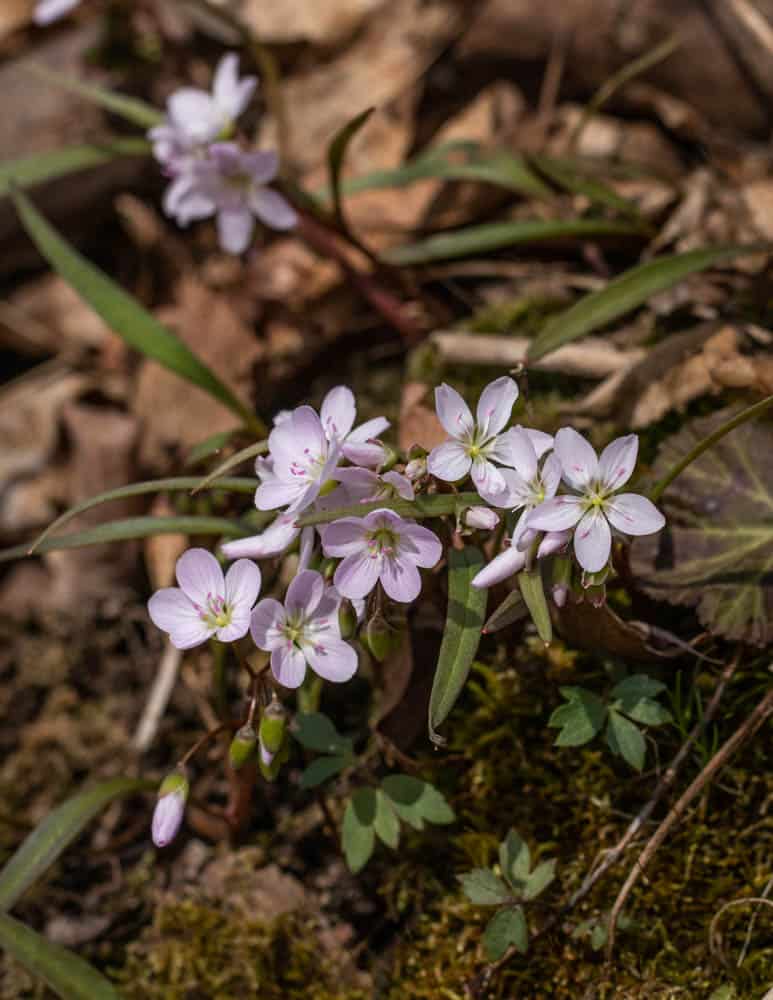
I knew of spring beauty, a small ephemeral wildflower that loves the same maple as everyone's favorite spring onion from reading Sam Thayer's first book The Forager's Harvest, but it wasn't for years afterword that I finally, actually saw them for what they were: a fantastic edible green that sports a few pretty flowers, instead of just some spring flowers that tell me ramps are nearby.
Miners lettuce was the key.
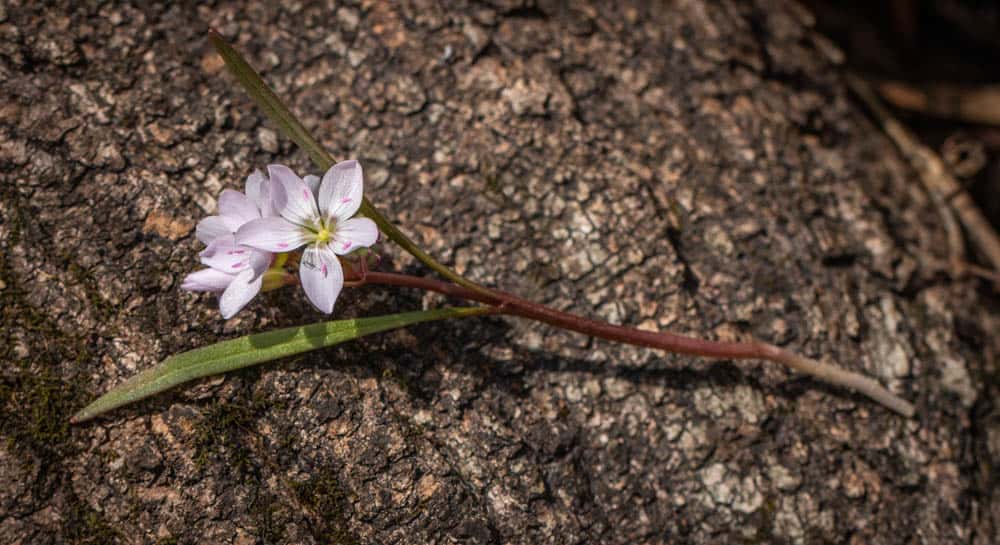
Background + Habitat
Backing up a bit, when I say spring beauty, I'm talking here only about Claytonia virginica that loves growing in ramp patches in maple-hardwood forests during spring I harvest in Minnesota and Wisconsin, since they're the only species I've eaten in quantity.
There's a number of different varieties of similar Claytonia that might all be called spring beauties around the United States, some of them said to be rare that might be better off left alone, as I've heard is the case with Alpine Spring Beauty (Claytonia megarhiza) that I got to try once, smuggled on a plane from Colorado to a wild food event.
To be safe, research your local species and determine their protection status, if any, before harvesting them.
"The whole of spring beauty is greater than it's parts, and you should regard the stem leaves, and flowers as one to truly appreciate it as an edible."
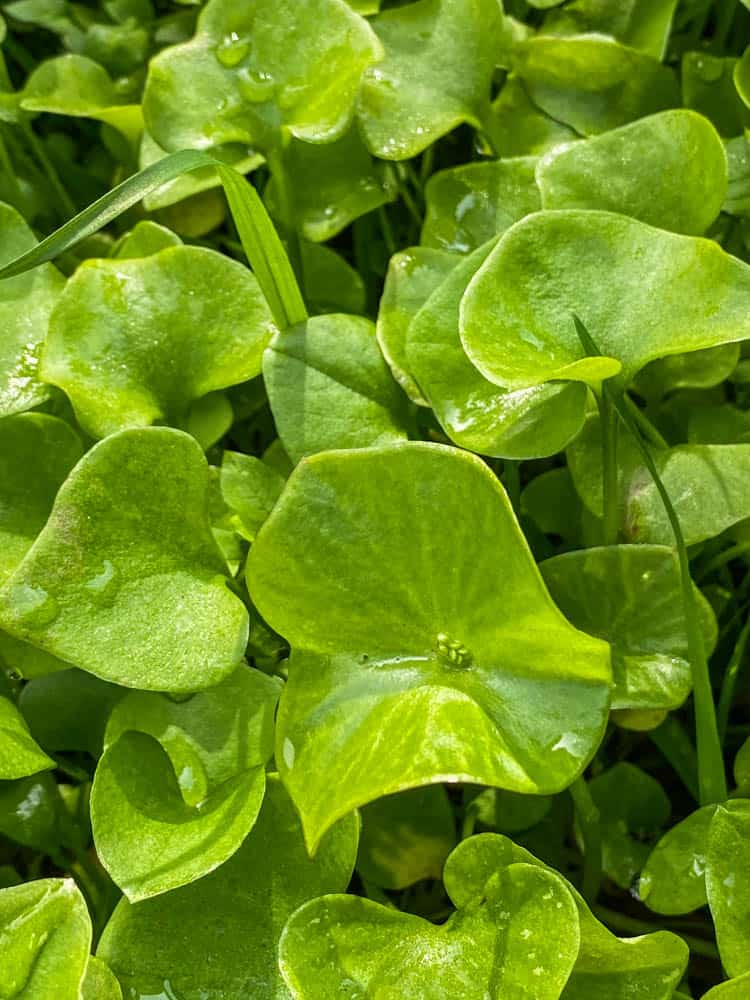
A Chef favorite
Chefs love miners lettuce (Claytonia perfoliata), a relative of purslane with juicy, succulent leaves. In the late winter, specialty purveyors from the west coast ship commercial quantities of the stuff to restaurants around the country.
A few local purveyors in Wisconsin tried growing the plant as an annual (It's a bit cold for it here in the north) for a few years that I can remember, but eventually gave up on it for one reason or another. Mostly I suspect people just didn't know what it was, which is a shame.
Miners lettuce is a delicious, luxurious green, but I'd basically given up on being able to eat or serve it unless I'm on vacation in San Francisco where it seems to grow like a weed at every park in town.
Edible Succulents
(Below) Purslane and spring beauty both share a distinctive, juicy red stem hinting at their shared botanical lineage as edible succulents.
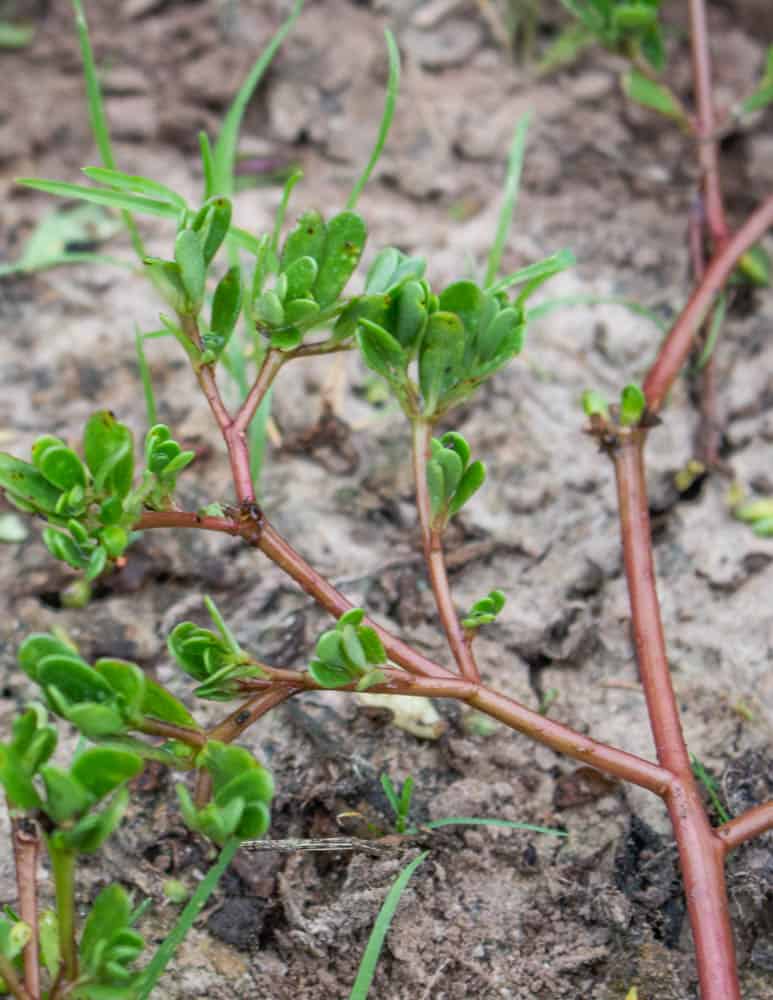
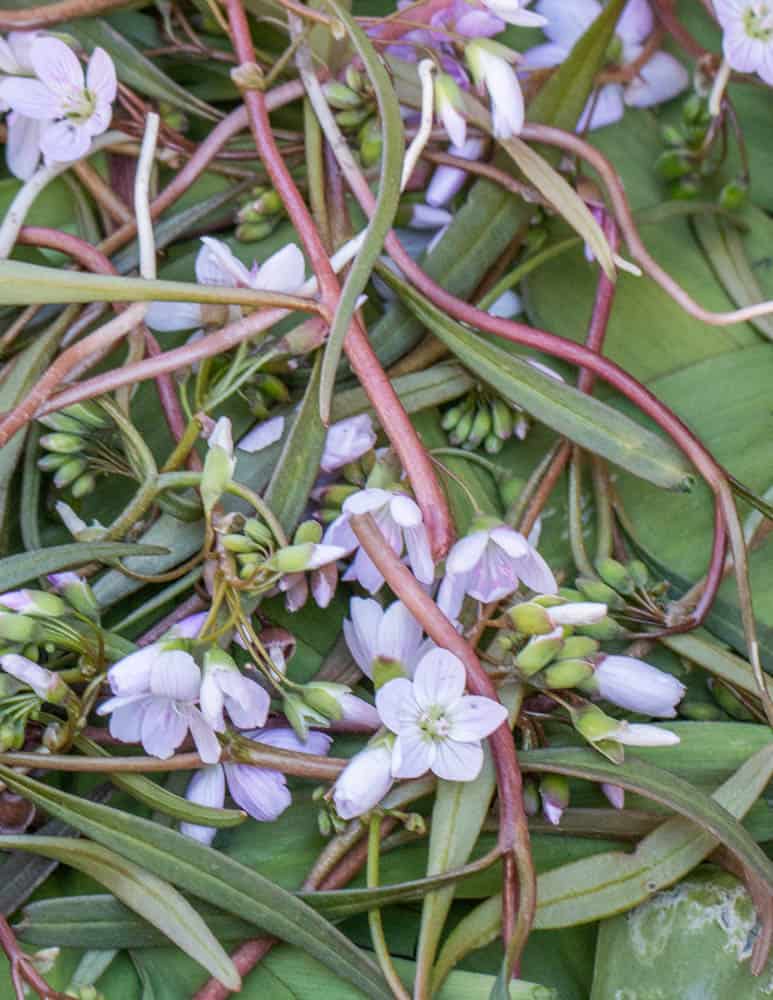
Midwestern Miners Lettuce
When Jesse Roesler and I started shooting our show The Wild Harvest, I felt that the watercress salad I was making for our spring episode could use an extra garnish. When Jesse asked me what one of the other plants was in the sugar bush while we were filming the ramp segment, I said "Oh that's Claytonia virginica". As the word claytonia came out of my mouth, a light turned on and I realized something.
"Claytonia perfoliata, Claytonia virginica—spring beauty is miners lettuce!
And it is. Before I'd regarded spring beauty as just a flower, ignoring the juicy leaves and stem.
If you've had miners lettuce and appreciate the succulent, crisp taste, one taste of the leaves of spring beauty will immediately remind you of them—just in a different form. From then on, I picked it for the table whenever I was out in the sugarbush for the rest of the season, and the season after that.
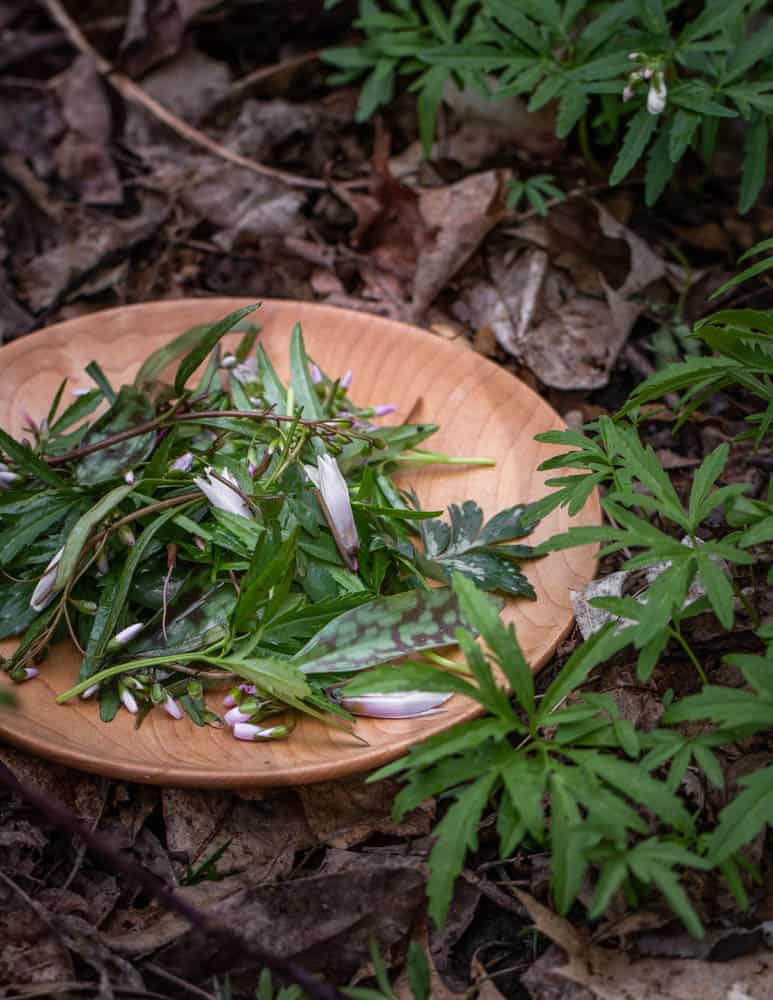
Eating
The biggest mistake I made with this plant was just overlooking it, which I think is easy to do when you're surrounded by ramps. If I can leave you with just one takeaway here, it's this: the whole of spring beauty is greater than it's parts, and you should regard the stem leaves, and flowers as one to really appreciate it.
I think spring beauty is probably best served whole, raw, in it's natural form, not seeing a knife sans a trim of the stem if they're too long to fit on a fork. If the ingredients are of a smaller size though, I will cut them into 1 inch sections.
I've heard of people cooking spring beauty, and, it's ok, but personally I think of miners lettuce as too precious to cook, so I mostly eat it raw in salads and as a garnish to plates.
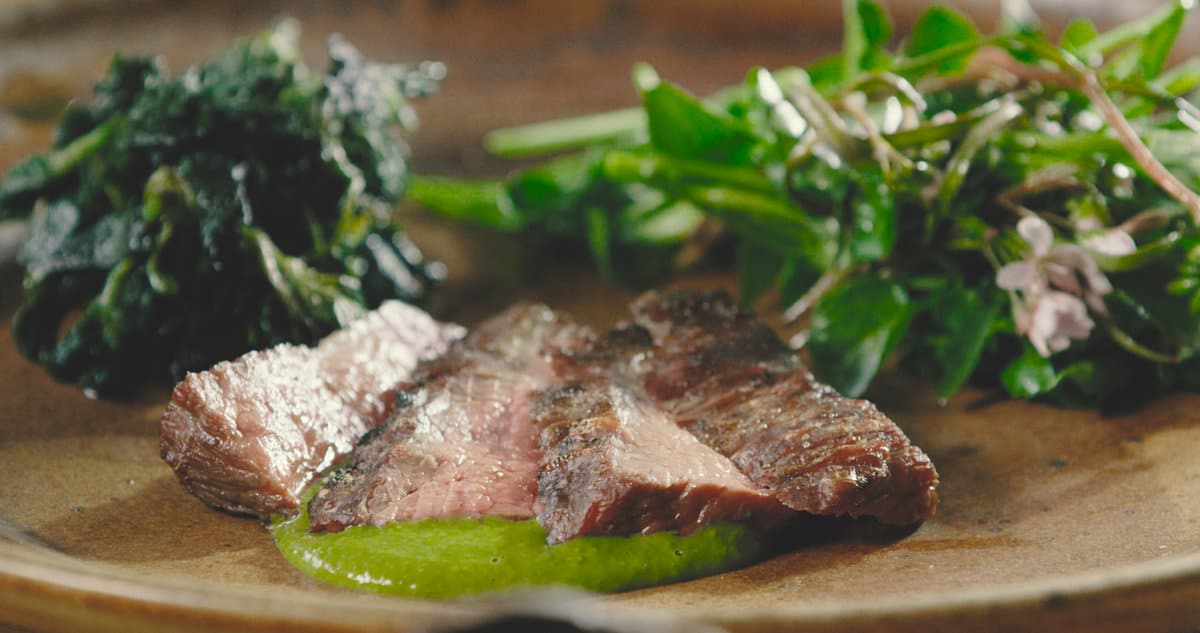
Giant spring beauty
The spring beauty pictured in this post will be similar to the vast majority of them I see, but, a few years ago Sam showed me something really interesting. If you go to open areas, say on the edge of the forest near your patch, it's possible to find some plants that have migrated from the woods to the full sun, and can be much larger in size compared to the regular ones shown in this post.
Side by side with the spring beauty grown in shade, it's a fascinating comparison, and a testament to the power of what plants can achieve given more resources.
Tubers
In addition to the above-ground portion of the plant, spring beauty also has small tubers underneath, with a strong emphasis on the word "small".
They taste ok, but, considering the fact that the plant dies if it's dug up, and large tubers are likely years old, combined with the fact that digging involves dirt, whereas harvesting leaves can be done with a simple pluck, I hardly think they're worth harvesting, personally.
References
The Forager's Harvest by Samuel Thayer
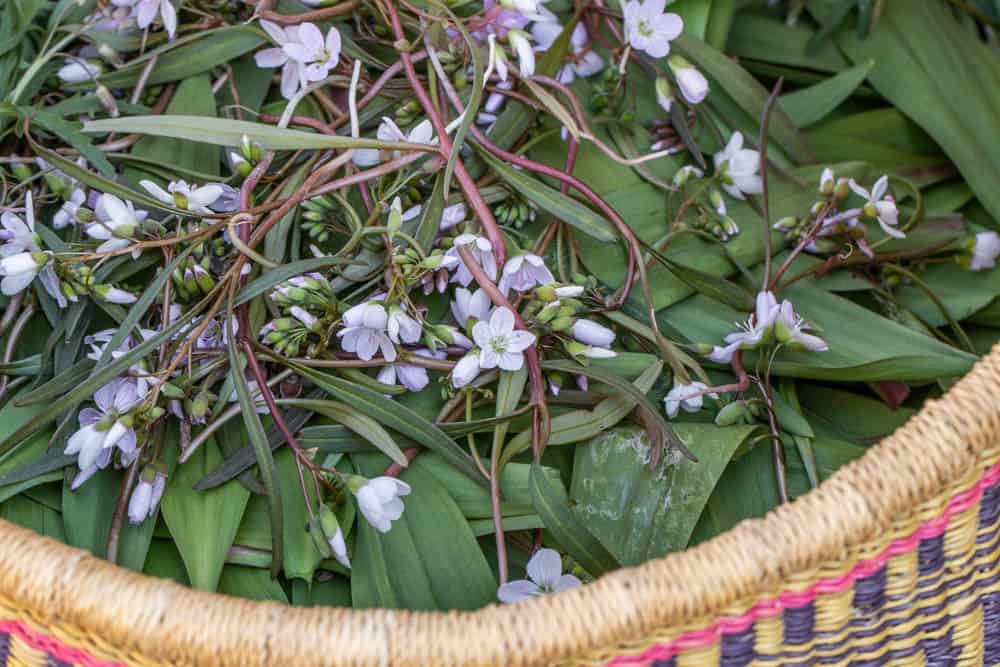

Lynette V
Just walked our property at 8900’ in Colorado and came upon loads of these beauties in stands of ponderosa pine - our version, Rocky Mountain Spring Beauty (Claytonia rosea (Montiaceae) - Miner's Lettuce). A delightful find for some early green eating - thank you for your post!
Alan Bergo
Thanks Lynette, just put a few in the ground here in MN for my yard.
Jenifer
I love using spring beauty to liven up salads and quiches, especially if I can toss in violets and some other pretty flowers.
Alan Bergo
It's such a nice plant. I can't wait to grab some this spring.